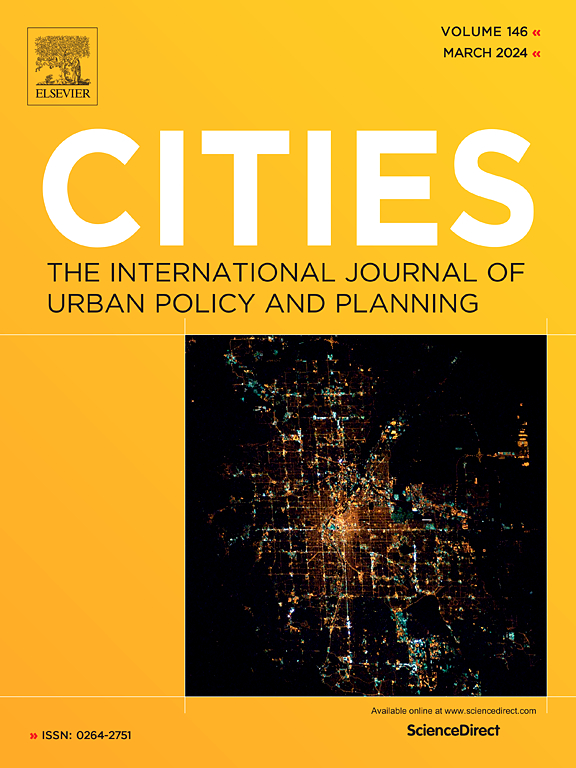揭示不同房价社区中居住绿地的数量和质量与老年人福祉之间的联系途径的异质性
IF 6
1区 经济学
Q1 URBAN STUDIES
引用次数: 0
摘要
初步证据表明,社会经济处境不利的群体可能从居住绿地(RGS)中获得更大的健康益处;然而,不同社会经济地位阶层的 RGS 对健康影响的内在机制的异质性仍不清楚。本研究以中国南京市的 439 名老年人为样本,旨在探讨居住绿地的数量和质量与老年人主观幸福感(SWB)之间的关联,并根据房价水平(作为社会经济地位的代表)揭示这种关联的差异及其机制。研究采用多变量线性模型和结构方程建模(SEM)来评估 RGS 与 SWB 之间的关系,并研究两者之间的内在联系。我们还采用了多组 SEM 分析来研究社会经济地位对这些途径的影响。我们发现,通过促进体育活动和社会凝聚力,以及减少空气污染和噪音,RGS 与 SWB 呈正相关。低社会经济地位社区中的老年人更有可能从接触 RGS 中受益。这些差异可部分归因于体育活动和社会凝聚力的不同,而体育活动和社会凝聚力与低社会经济地位社区的老年人更相关。我们的研究结果对旨在欠发达城市环境中实现健康公平的绿色干预措施具有启示意义。本文章由计算机程序翻译,如有差异,请以英文原文为准。
Unraveling the heterogeneity of pathways linking residential green space quantity and quality to the well-being of older adults in different housing price communities
Preliminary evidence suggests that socioeconomically disadvantaged groups may derive greater health benefits from residential green space (RGS); however, the heterogeneity of the mechanisms underlying the health effects of RGS across socioeconomic status strata remains unclear. This study aimed to examine the association between RGS quantity and quality and subjective well-being (SWB) in older adults, and to unravel the variation in this association and its mechanisms based on housing price levels (as an SES proxy), using a sample of 439 older adults in Nanjing, China. Multivariate linear models and structural equation modeling (SEM) were used to evaluate the association between RGS and SWB and to examine their underlying pathways. Multi-group SEM analysis was employed to investigate the effect modification of SES on these pathways. We found that RGS was positively associated with SWB by promoting physical activity and social cohesion, and by reducing perceived air pollution and noise. Older adults in low-SES communities were more likely to benefit from RGS exposure. These variations could be partially explained by differences in physical activity and social cohesion, which were more pertinent for older adults in low-SES communities. Our findings have implications for green interventions aimed at achieving health equity in underdeveloped urban environments.
求助全文
通过发布文献求助,成功后即可免费获取论文全文。
去求助
来源期刊

Cities
URBAN STUDIES-
CiteScore
11.20
自引率
9.00%
发文量
517
期刊介绍:
Cities offers a comprehensive range of articles on all aspects of urban policy. It provides an international and interdisciplinary platform for the exchange of ideas and information between urban planners and policy makers from national and local government, non-government organizations, academia and consultancy. The primary aims of the journal are to analyse and assess past and present urban development and management as a reflection of effective, ineffective and non-existent planning policies; and the promotion of the implementation of appropriate urban policies in both the developed and the developing world.
 求助内容:
求助内容: 应助结果提醒方式:
应助结果提醒方式:


